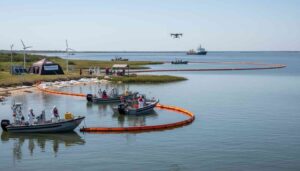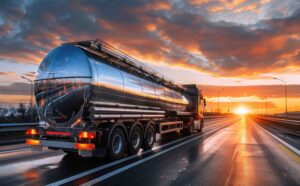Managing water resources in hydraulic fracturing (fracking) operations is a complex and critical task that involves ensuring water availability, minimizing environmental impact, and efficiently handling the large volumes of water required for the process. Here’s an overview of key strategies and considerations for managing water resources in hydraulic fracturing:
1. Water Sourcing and Supply
- Identifying Water Sources: Fracturing operations require significant amounts of water, typically sourced from surface water bodies (rivers, lakes), groundwater, or recycled water. The selection of water sources depends on availability, quality, and regulatory constraints.
- Minimizing Freshwater Use: To reduce the impact on local water supplies, operators are increasingly using non-potable water sources, including brackish water, and promoting the reuse and recycling of produced water from previous fracking operations.
- Water Transportation and Storage: Efficient transportation and storage systems are essential for managing water on-site. Pipelines, water trucks, and temporary storage ponds or tanks are commonly used to transport and store water near the drilling sites.
2. Water Usage Optimization
- Water Efficiency Technologies: Implementing technologies that reduce the volume of water required per well, such as advanced fracking fluids and techniques like gelled water or foam-based fracturing, can significantly decrease overall water usage.
- Water Recycling and Reuse: Recycling and reusing produced water (the water that returns to the surface after fracturing) is a key strategy for reducing freshwater demand. Advanced treatment technologies, such as filtration, reverse osmosis, and distillation, are used to treat produced water to a quality suitable for reuse in further fracking operations.
3. Environmental Impact Management
- Water Quality Protection: Protecting local water quality is a primary concern in hydraulic fracturing. This involves careful site selection, well design, and the use of protective barriers like well casings to prevent contamination of groundwater sources.
- Wastewater Management: Effective treatment and disposal of wastewater (including flowback water and produced water) are crucial. Options include deep well injection, where treated water is injected back into deep geological formations, or treating water to meet regulatory standards before discharge or reuse.
- Monitoring and Compliance: Continuous monitoring of water quality and quantity, both at the source and in surrounding areas, is essential for compliance with environmental regulations and for detecting potential contamination or depletion issues early.
4. Regulatory and Community Considerations
- Compliance with Regulations: Fracking operations must comply with a range of local, state, and federal regulations governing water use, wastewater disposal, and environmental protection. Operators need to stay informed about regulatory changes and implement best practices to meet or exceed these requirements.
- Community Engagement: Effective communication with local communities about water use, potential impacts, and the measures taken to protect local water resources is essential. Transparency and responsiveness to community concerns can help build trust and reduce opposition to operations.
5. Water Management Technologies
- Advanced Treatment Systems: Technologies such as membrane filtration, UV disinfection, and electrocoagulation are used to treat and recycle water on-site, reducing the need for freshwater and minimizing wastewater.
- Digital Water Management: Using sensors, data analytics, and real-time monitoring systems, operators can track water use, detect leaks or inefficiencies, and optimize water management strategies, leading to more sustainable and cost-effective operations.
6. Risk Mitigation and Contingency Planning
- Risk Assessments: Conducting thorough risk assessments to identify potential water-related risks, such as droughts, contamination incidents, or water supply disruptions, allows operators to develop contingency plans and mitigate these risks proactively.
- Emergency Response Plans: Developing and implementing emergency response plans for potential water-related incidents, such as spills or contamination events, ensures that operators can quickly address and mitigate any environmental impact.
7. Innovation and Research
- Ongoing Research: Continuous research into new technologies and methods for reducing water use, improving recycling rates, and mitigating environmental impacts is crucial. Partnerships with academic institutions, industry groups, and government agencies can drive innovation in water management practices.
- Pilot Projects: Implementing pilot projects to test and refine new water management technologies and strategies before full-scale deployment can help identify the most effective solutions for specific operational contexts.
8. Sustainability and Long-Term Planning
- Sustainable Water Management: Long-term sustainability involves planning for water use that minimizes impact on local water resources, promotes water conservation, and aligns with broader environmental goals. This may include investing in infrastructure to support water recycling and reuse, as well as collaborating with local stakeholders to ensure sustainable water practices.
- Integrated Resource Management: Incorporating water management into broader resource management strategies, considering factors such as land use, energy production, and environmental conservation, can help balance the competing demands on water resources.
Managing water resources in hydraulic fracturing operations requires a comprehensive approach that balances operational needs with environmental stewardship and regulatory compliance. By implementing advanced technologies, optimizing water use, and engaging with stakeholders, operators can minimize their impact on water resources while maintaining efficient and effective fracking operations.
Read more on Sparkview Energy:
Flow Measurement Technologies: Ensuring Accuracy in Oil and Gas Production
Natural Gas Compression: Equipment and Applications in the Midstream Sector
Sustainable Practices in the Upstream Oil and Gas Sector







